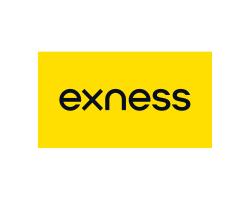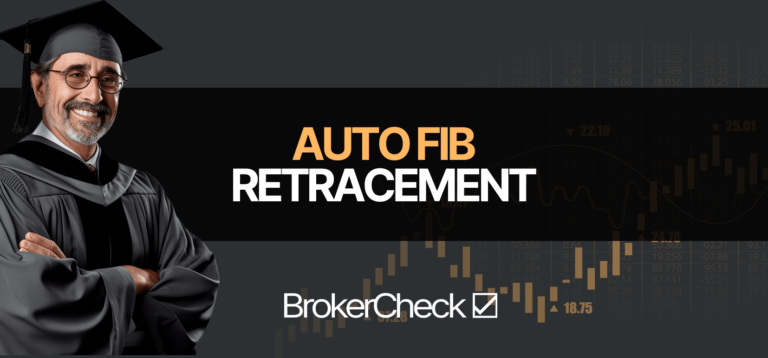What is the Chande Kroll Stop?
The Chande Kroll Stop is a volatility-based indicator developed by Tushar Chande and Stanley Kroll. It is designed to set stop-loss levels that are adaptive to market conditions. By taking into account the volatility of the security, the Chande Kroll Stop adjusts the stop-loss levels, enabling traders to reduce risk while allowing profits to run.

The Chande Kroll Stop Formula
The Chande Kroll Stop consists of two lines, a long stop and a short stop, which represent the stop-loss levels for long and short positions, respectively. To compute these stop-loss levels, the Chande Kroll Stop relies on the following formula:
Calculate the True Range (TR):
$$TR = \max(H – L, |H – C_{prev}|, |L – C_{prev}|)$$
Calculate the Average True Range (ATR) over a specified period (usually 10 periods):
ATR = \frac{1}{n}\sum_{i=1}^{n} TR_i
Calculate the Highest High (HH) and Lowest Low (LL) over a specified lookback period (usually 20 periods):
HH = \max(H_1, H_2, …, H_n)
LL = \min(L_1, L_2, …, L_n)
Calculate the initial stop levels for long and short positions:
Initial_Long_Stop = HH – k * ATR
Initial_Short_Stop = LL + k * ATR
Update the stop levels for long and short positions:
Long_Stop = \max(Initial_Long_Stop, Long_Stop_{prev})
Short_Stop = \min(Initial_Short_Stop, Short_Stop_{prev})
In the formula, H represents the high price, L the low price, and C_{prev} the previous closing price.
How to Use the Chande Kroll Stop
The Chande Kroll Stop can be employed in various ways to improve your trading strategy:
- Trend following: When the price is above the long stop, traders can consider entering a long position, while when the price is below the short stop, they can consider entering a short position.
- Risk management: Traders can use the Chande Kroll Stop to set stop-loss orders to protect their positions. For instance, if in a long position, the trader can place a stop-loss order at the long stop level, and vice versa for a short position.
- Exit strategy: The Chande Kroll Stop can act as a trailing stop that adjusts according to market volatility, providing traders with a dynamic exit point to lock in profits.
Combinations of the Chande Kroll Stop
The Chande Kroll Stop is a technical indicator that combines some of the concepts of popular indicators, namely the Long Stop Line, Average True Range (ATR), and Trailing Stop. The Chande Kroll Stop helps traders set dynamic stop-loss levels for both long and short positions based on market volatility and recent price action.
Here’s how the mentioned indicators relate to the Chande Kroll Stop:
1. Long stop line
The Long Stop Line is a level used to set stop-loss orders for long positions. It is a dynamic line that adjusts according to price action and market conditions. The primary purpose of the Long Stop Line is to protect traders from significant losses by providing an exit point if the market moves against their position.
A common method to calculate the Long Stop Line is by using the Chande Kroll Stop indicator, which takes into account the highest high and the average true range (ATR) over a specified period. The Long Stop Line is set a certain distance below the highest high, determined by multiplying the ATR by a chosen factor.
2. Average true range over P bars
The Average True Range (ATR) is a volatility indicator that measures the average price range over a specified number of bars (P bars). It helps traders understand the degree of price fluctuations and is commonly used in setting stop-loss orders and profit targets.
To calculate the ATR over P bars, follow these steps:
Calculate the True Range (TR) for each bar:
TR = max(High – Low, High – Previous Close, Previous Close – Low
Calculate the ATR over P bars:
ATR = (1/P) * ∑(TR) for the last P bars
The ATR can be used to set dynamic stop-loss orders that take into account the current market volatility, as seen in the Chande Kroll Stop and Chandelier Exit indicators.
3. Trailing stop
A Trailing Stop is a type of stop-loss order that moves with the market, adjusting its level as the price moves in a favorable direction. The primary objective of a trailing stop is to lock in profits while giving the position room to grow.
Trailing stops can be set as a fixed distance from the current price or based on a technical indicator, such as the ATR. As the market moves in the trader’s favor, the trailing stop moves accordingly, protecting the profits. However, if the market reverses, the trailing stop remains at its last level, providing an exit point that limits potential losses.
Chandelier Exit
The Chandelier Exit is a volatility-based indicator developed by Charles LeBeau. It is designed to help traders determine exit points for their positions by setting trailing stop-loss orders based on the ATR.
The Chandelier Exit consists of two lines: the long Chandelier Exit and the short Chandelier Exit. To calculate the Chandelier Exit, follow these steps:
Calculate the ATR over a specified period (e.g., 14 bars).
Determine a multiplier (e.g., 3).
Calculate the long Chandelier Exit:
Long Chandelier Exit = Highest High – (Multiplier * ATR)
Calculate the short Chandelier Exit:
Short Chandelier Exit = Lowest Low + (Multiplier * ATR)
The Chandelier Exit allows traders to set stop-loss orders that adapt to market volatility, protecting profits while providing room for the position to grow.
Chande Kroll Stop vs Chandelier Exit
Both the Chande Kroll Stop and the Chandelier Exit are popular methods used for determining stop-loss orders. Although they serve a similar purpose in risk management, each has distinct characteristics and applications. Understanding the differences between these two can be pivotal for traders in optimizing their exit strategies.
Key Differences
- Calculation Method: While both use the ATR, the Chande Kroll Stop involves a more complex calculation and generally sets stops further away from the current price than the Chandelier Exit.
- Risk Tolerance: The Chande Kroll Stop suits traders who are comfortable with higher risk and more significant market fluctuations. In contrast, the Chandelier Exit is more conservative, appealing to those who prefer to protect gains more closely.
- Market Application: The Chande Kroll Stop may be more effective in highly volatile markets where a wider stop is necessary to avoid premature exits. The Chandelier Exit, being tighter, is better suited for markets with clearer trends and less extreme volatility.
Conclusion
The Chande Kroll Stop is an invaluable tool that can help traders manage risk, follow trends, and devise effective exit strategies. By understanding the formula behind the Chande Kroll Stop and knowing how to apply it in real-world trading scenarios, traders can enhance their decision-making processes and potentially increase their chances of success in the markets.
In summary, the Chande Kroll Stop is an essential addition to any trader’s toolkit. Its ability to adapt to changing market conditions and provide dynamic stop-loss levels based on volatility makes it a robust and reliable indicator. By incorporating the Chande Kroll Stop into your trading strategy, you can better manage risk and optimize your entry and exit points, ultimately leading to improved trading performance.











